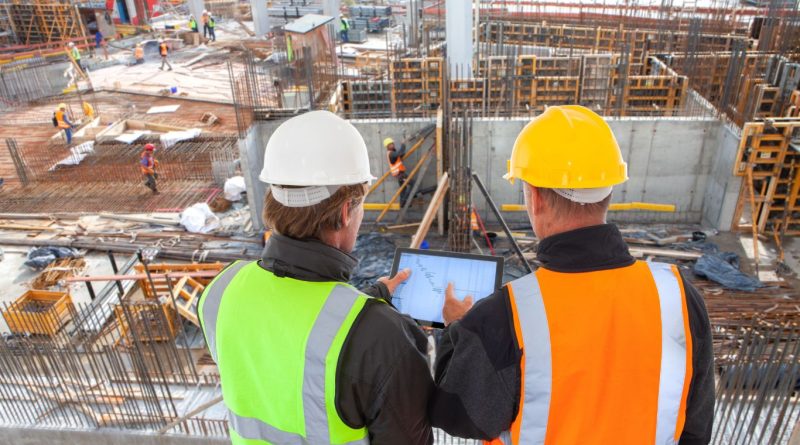Top 8 Cost-Efficient Construction Methods for Your Next Project
The construction industry is undergoing a rapid transformation with advancements in technology, materials, and processes. For project managers and developers, staying cost-effective without sacrificing quality is essential. Below, we explore eight of the most cost-efficient construction methods, offering valuable insights into techniques that streamline processes and reduce overall costs.
1. Modular and Prefabricated Construction
This method involves creating building components off-site under controlled conditions, which are later transported to the construction site for assembly. By handling critical construction steps off-site, material waste and labor costs are reduced, while quality control is maximized.
- Cost Savings: Reducing on-site labor means fewer workers are required, cutting down on labor expenses. Additionally, simultaneous on-site and off-site work shortens project timelines, saving even more on overhead costs.
- Sustainability Impact: Prefabrication also reduces material waste and environmental footprint, aligning with green building standards.
This method is ideal for housing developments and commercial buildings, where the speed of completion is a critical factor. Companies like BROAD Sustainable Building in China have demonstrated how modular buildings can be erected in mere days.
2. 3D Volumetric Construction
A more advanced form of modular construction, 3D volumetric construction involves creating entire building sections (modules) in a factory setting, which are then transported and assembled on-site. By constructing most of the building off-site, costs related to on-site labor and waste management are significantly reduced.
- Time Efficiency: Volumetric construction can reduce project timelines, making it ideal for projects facing tight deadlines
- Cost Savings: Less material waste and the ability to work in parallel (factory and site) reduce costs, while fewer on-site workers mean lower expenses for wages.
This method is particularly advantageous for multi-family homes, hotels, and office buildings that require repetitive design elements.
3. Hybrid Concrete Construction
Hybrid concrete construction leverages both precast and in-situ concrete, offering a flexible and efficient solution for large-scale projects. Precast elements like walls and beams are created off-site, while in-situ concrete allows for customization on-site, ensuring structural integrity where needed.
- Key Benefits: Precast components accelerate the building process, while in-situ work allows for site-specific adjustments.
- Use Case: Hybrid concrete is commonly used in commercial and infrastructure projects like bridges and highways, where durability and budget constraints are paramount
4. Building Information Modeling (BIM)
BIM is one of the digital methods that integrates various aspects of a construction project into a cohesive, visual 3D model. This model allows architects, engineers, and contractors to coordinate more effectively, reducing costly errors and rework.
- Cost Reduction: Clash detection, one of BIM’s most important features, identifies conflicts between building components before construction begins, preventing expensive on-site corrections
- Long-Term Value: BIM not only saves money during the construction phase but also facilitates better maintenance and facility management throughout the building’s lifecycle.
BIM has become a standard in large-scale commercial and public infrastructure projects, where coordination between multiple teams is essential.
5. Thin Joint Masonry
Thin joint masonry uses a high-strength adhesive mortar rather than traditional cement-based mortar, allowing for faster and more efficient wall construction. It’s especially effective in residential projects where speed is critical.
- Faster Construction: Walls can be built much faster than with traditional methods, allowing other work, such as electrical and plumbing, to start sooner. This accelerates the entire construction timeline.
- Cost Efficiency: By reducing the amount of mortar required, material costs decrease, and the strength of the structure improves, minimizing future repairs
6. Precast Concrete Foundations
Precast foundations are constructed off-site, offering several advantages over traditional poured foundations. These foundations are manufactured under controlled conditions, ensuring higher quality and faster installation.
- Reduced Delays: Precast foundations are less vulnerable to weather-related delays, a significant cost saver in regions with harsh climates. This method also allows for more predictable project timelines.
- Cost Savings: Quicker installation and less material waste result in lower labor and equipment costs
7. Use of Recycled and Local Materials
Sourcing materials locally and utilizing recycled components like steel and cement can significantly reduce construction costs. Local sourcing minimizes transportation expenses, and recycled materials often come at a lower price.
- Environmental Impact: In addition to cost savings, using recycled materials supports sustainability goals and reduces the environmental footprint of the project
- Cost Benefits: Recycled steel, for example, can be up to 30% cheaper than newly manufactured materials, making it a popular choice for budget-conscious developers.
8. Automation and Robotics
Robotics and automation are becoming increasingly prevalent in construction, offering precision, speed, and cost-efficiency. Tasks such as bricklaying, material handling, and even concrete pouring can now be automated, reducing human labor requirements and improving project timelines.
- Labor Reduction: Automated systems reduce the need for on-site workers, minimizing labor costs and the potential for human error
- Speed and Efficiency: Robotics allow for faster, more accurate work, cutting construction time and reducing overall project costs.
Automation is particularly useful in large-scale projects like infrastructure, where consistent, repetitive tasks are the norm.
As the construction industry continues to evolve, adopting modern construction methods is crucial for project managers looking to stay within budget while delivering high-quality results. From prefabrication to automation, these cost-efficient construction techniques not only reduce expenses but also improve project timelines and sustainability.
